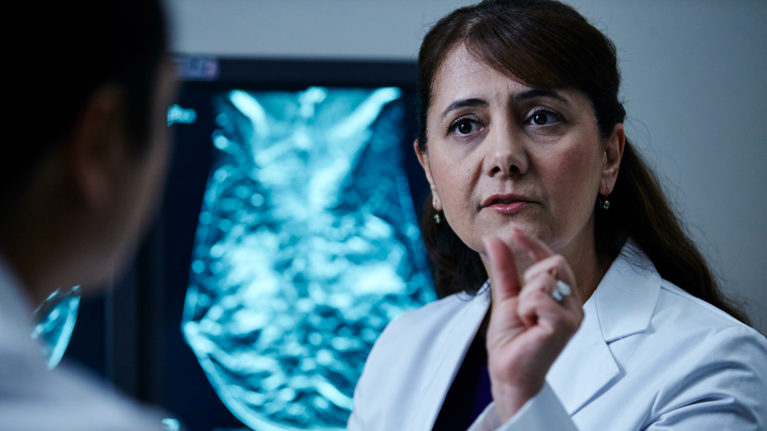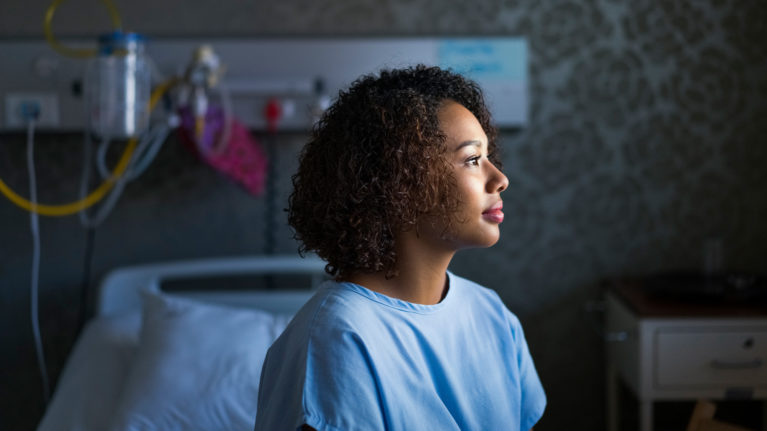I Need a Biopsy

What Should I Expect with a Breast Biopsy?
Many women ask themselves, “Do I really need a breast biopsy?” If your doctor finds an area of concern during a diagnostic mammogram, you may have to have a breast biopsy to confirm whether the suspicious tissue is cancerous.
What is a Breast Biopsy?
A breast biopsy is a procedure that removes a small amount of your breast tissue from an area of concern. Your doctor will then test the tissue in a lab to determine if it is cancerous.
There are several different types of biopsies, including fine needle aspiration, core needle biopsy and a surgical biopsy. Some biopsy methods, like a stereotactic breast biopsy, use a 3D™ mammogram or another imaging method to help guide the doctor during the procedure. It’s important to discuss the type of biopsy procedure you will be receiving with your doctor in order to be best prepared.
What is the Breast Biopsy Procedure?
During a biopsy, your doctor may make a slight incision and then insert a small needle into your breast. The needle then removes a small sample of tissue from the target area.
Typically, after tissue removal, a tiny marker or clip—smaller than a grain of rice—will be placed where the tissue was taken. While the marker will not be visible to the eye, it helps doctors mark the area of concern and easily locate it during any follow-up imaging or treatment.
The removed tissue will be sent to a lab, where a pathologist will determine if cancer cells are present. It may take several days before the results of your procedure are ready. Your physician will interpret the results and determine the appropriate next steps.
What Percentage of Breast Biopsies are Cancer?
You may be feeling nervous or anxious before your procedure – that’s perfectly normal. It’s important to note that a biopsy does not mean you have cancer. In fact, 80% of biopsies turn out to be benign – meaning noncancerous44.
Does a Breast Biopsy Hurt?
Your doctor will numb the target area of your breast during a stereotactic biopsy or put you under anesthesia during a surgical biopsy. A biopsy is typically quick, but you might experience some minimal discomfort throughout the procedure. Breast biopsy recovery can include typical side effects like tenderness, bruising, bleeding and/or swelling. Be sure to discuss any side effects with your doctor and limit any strenuous activity for a few days after your biopsy.
How to Prepare for a Biopsy?
Your doctor will provide specific instructions on how to prepare for your procedure based on the type of biopsy you will be receiving. The more informed you are about the procedure, the more comfortable you’ll be, so don’t be afraid to ask questions.
In general, you can prepare for your procedure by:
- Ask your doctor questions about the procedure
- Telling your doctor about any medications that you take
- If you have any medical conditions, tell your doctor about them
- Wear a loose-fitting, comfortable outfit during the procedure
Depending on which type of biopsy your doctor recommends, you may not be able to eat before your procedure or drive yourself home. You should also avoid using deodorant or any powders the day of your procedure. Discuss any additional requirements for your procedure with your doctor.
What is the Breast Biopsy Recovery Like?
A biopsy may seem intimidating, but the procedure is minimally invasive and has a short recovery time. You may feel slight discomfort after your breast biopsy– but that’s expected. If you’re not sure about a symptom you have, discuss your concern with your health care professional. Discussing your procedure with your doctor will allow you to make more informed decisions about your health – knowledge is power.
